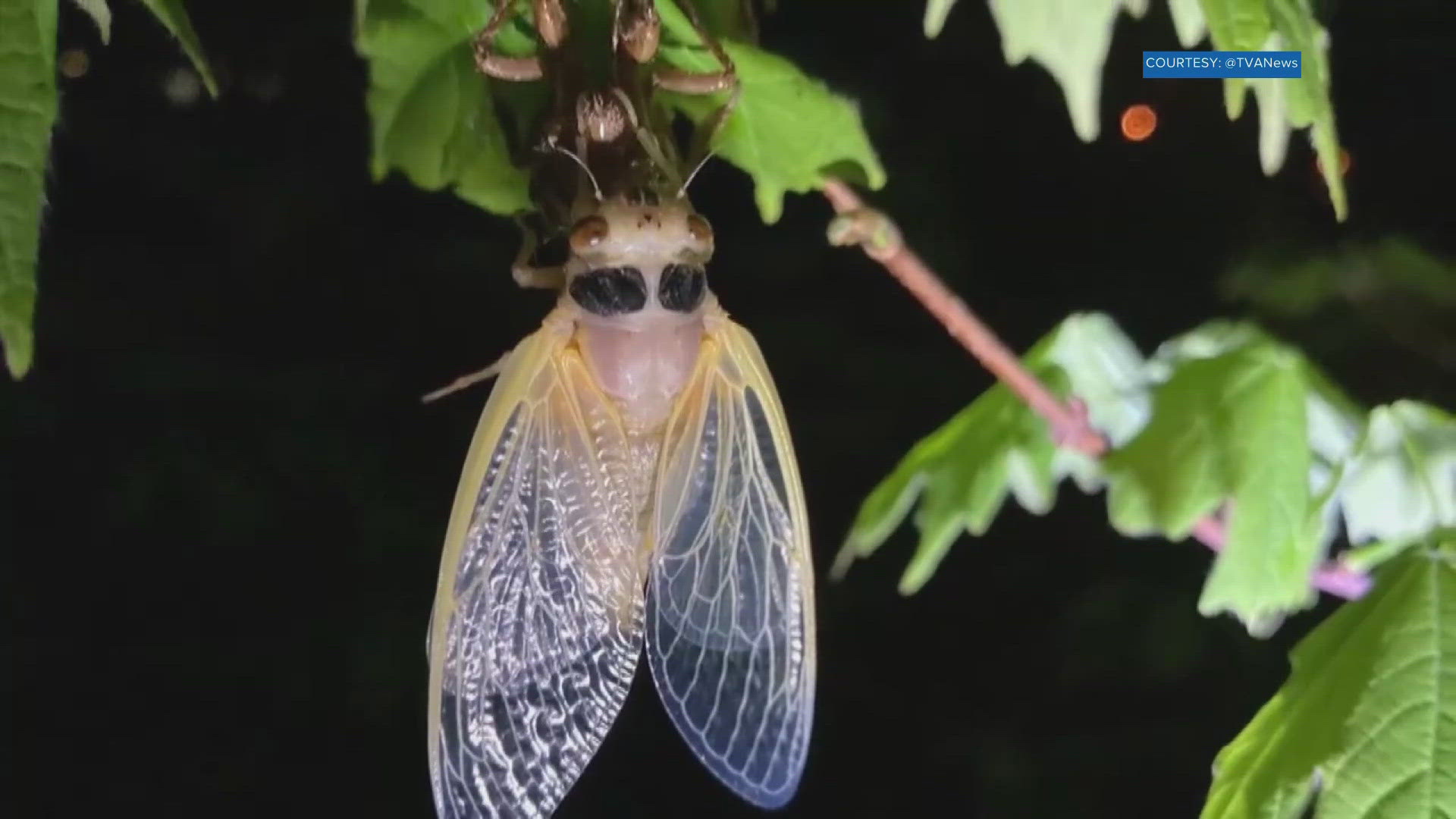KNOXVILLE, Tenn. — Cicadas are coming in swarms to some parts of the Tennessee Valley, according to Jesse Troxler, a Tennessee Valley Authority zoologist.
This will be the first time in 13 years that the state will see this brood of the periodical cicadas, Troxler said.
Cicadas claw their way to daylight on exactly the 13th or 17th year after they hatch, emerging only when the soil temperature at 8 inches deep reaches 64 degrees Fahrenheit. This development is expected to happen in early May, the zoologist said.
However, most counties in East Tennessee won't have any trouble with the increase of cicadas, as it will mostly occur in Middle Tennessee.
"By coming up at the same time, they practice something called, 'predator satiation,'" Troxler said. "So by millions and billions of them appearing in the same area at the same time, they can overwhelm the predators and they can't all be eaten. So, some of them will survive to reproduce and lay eggs."
They are not expected in Blount County and Knox County, and the emergence is not expected to be the same kind of "explosion" seen to the northwest. Neither is it expected to be something that will rival the 17-year cicadas East Tennessee saw in 2021 and 2004 with Brood X.
According to the University of Tennessee's Department of Entomology and Plant Pathology, the Brood XIX cicadas are expected to emerge primarily in Middle Tennessee. However, the brood is also known to emerge in East Tennessee counties closer to the Chattanooga area, including Monroe, McMinn, Meigs, Rhea and Loudon counties.
Once the cicadas emerge, they will begin the mating process and start laying eggs. Then, the 13-year waiting process will begin again.
These cicadas will only live around three to four weeks above ground.

